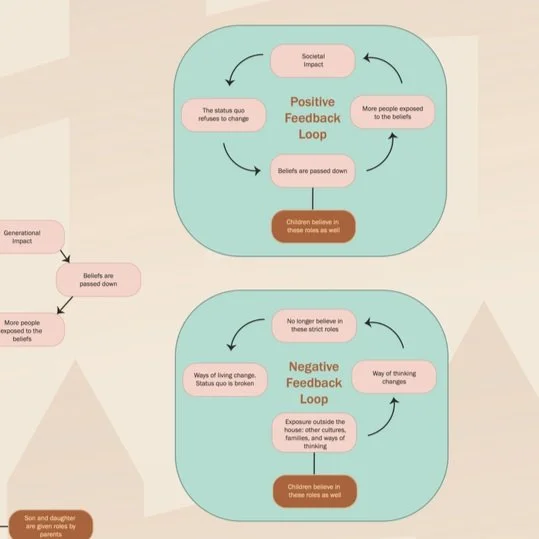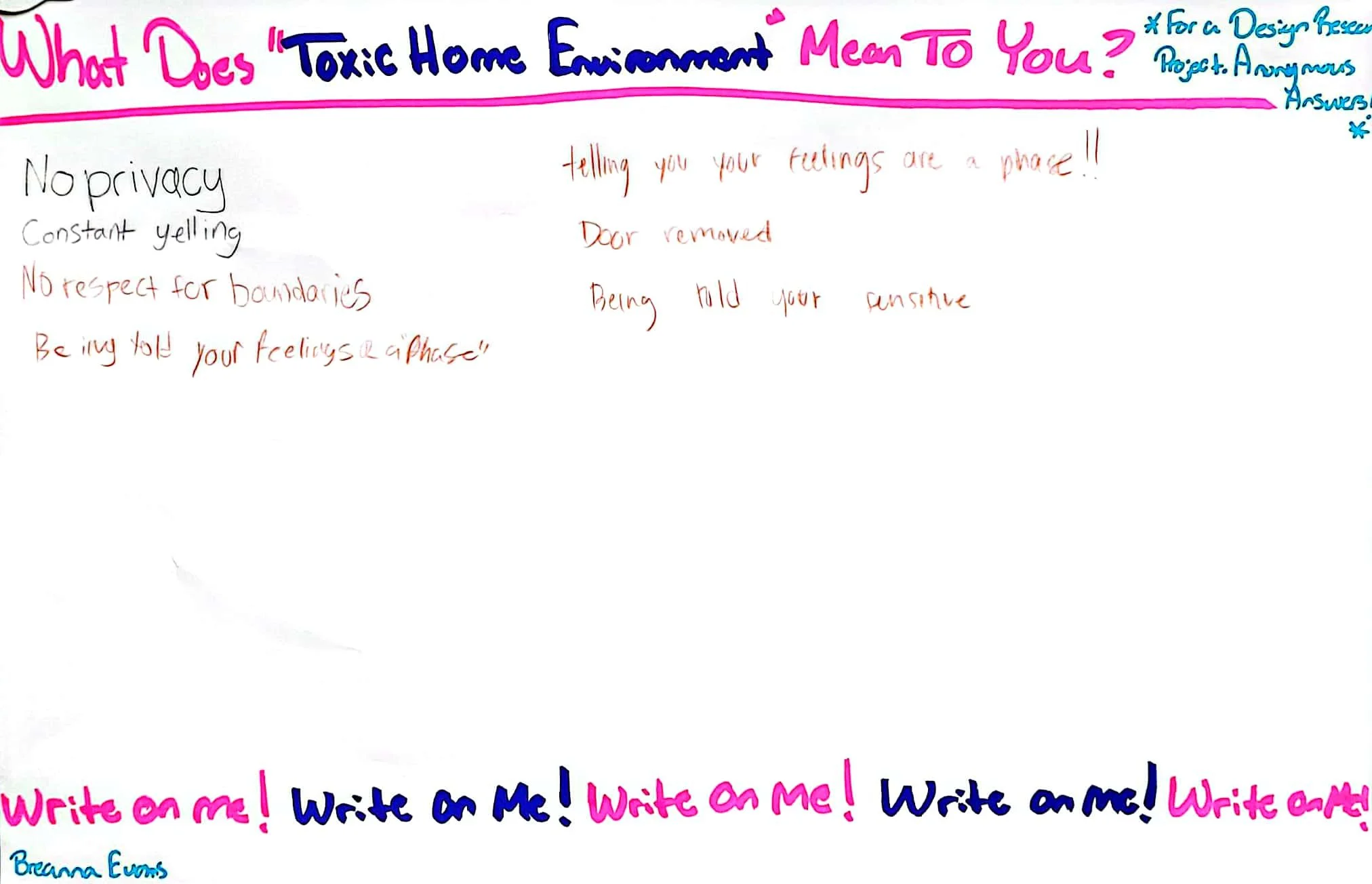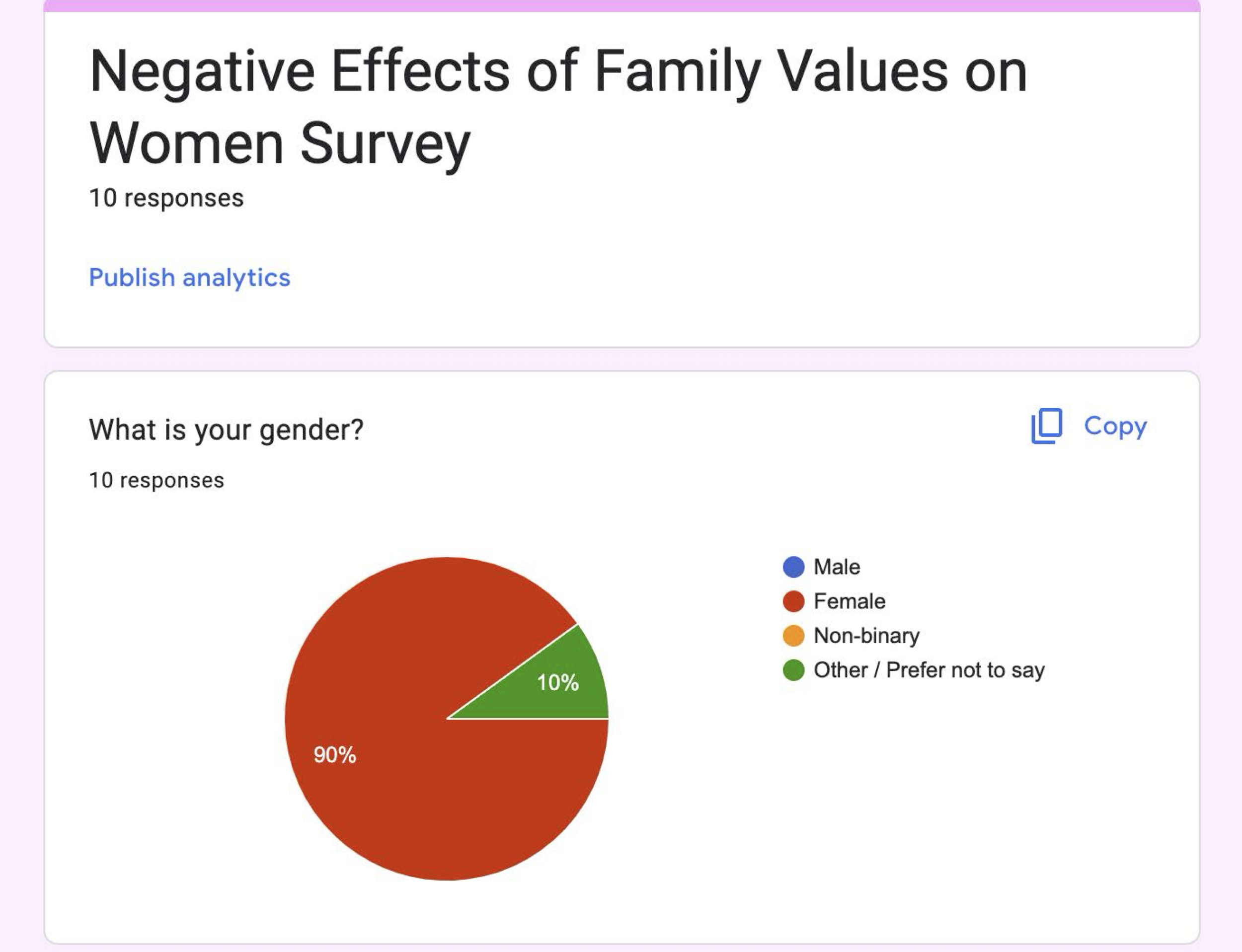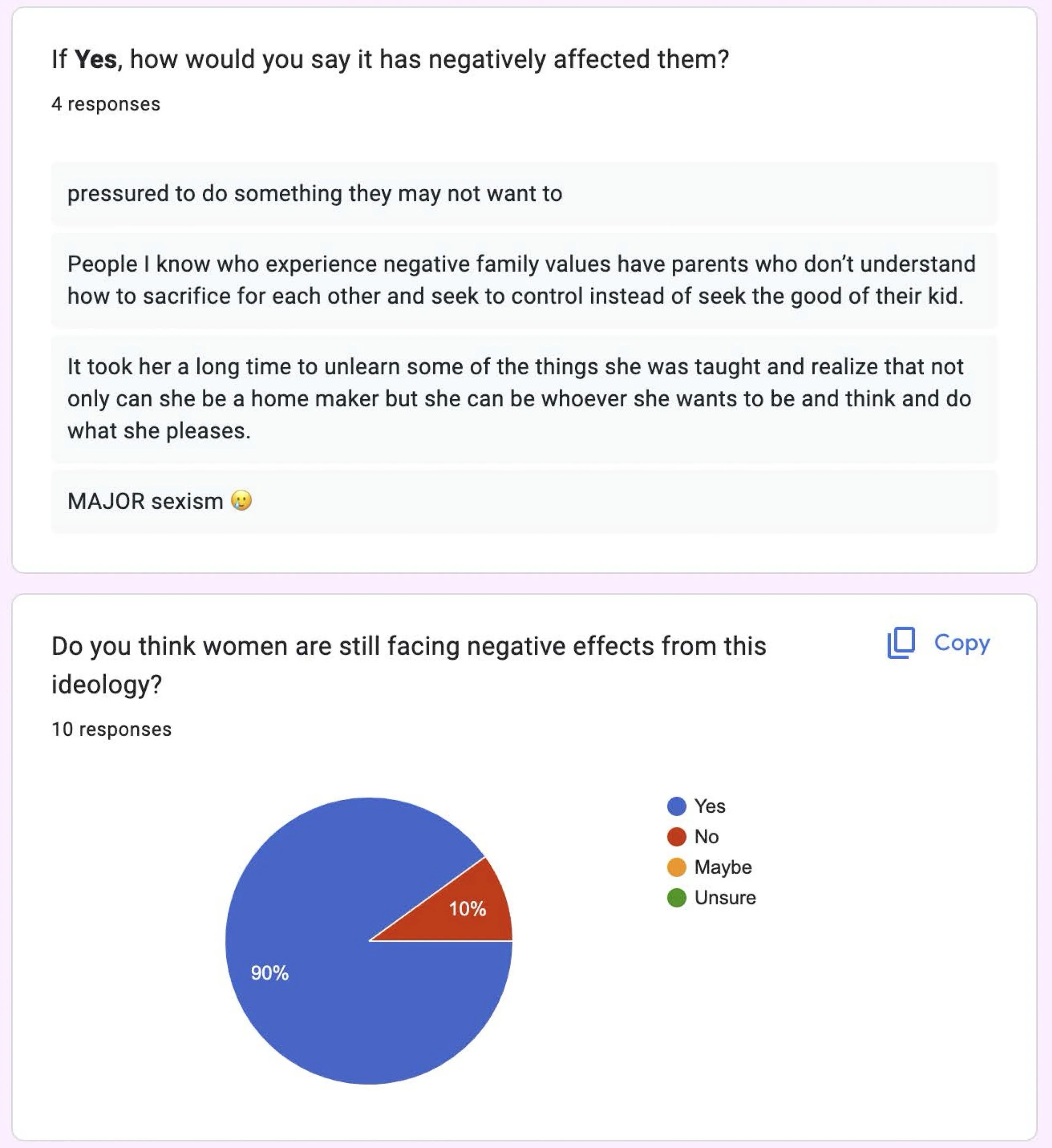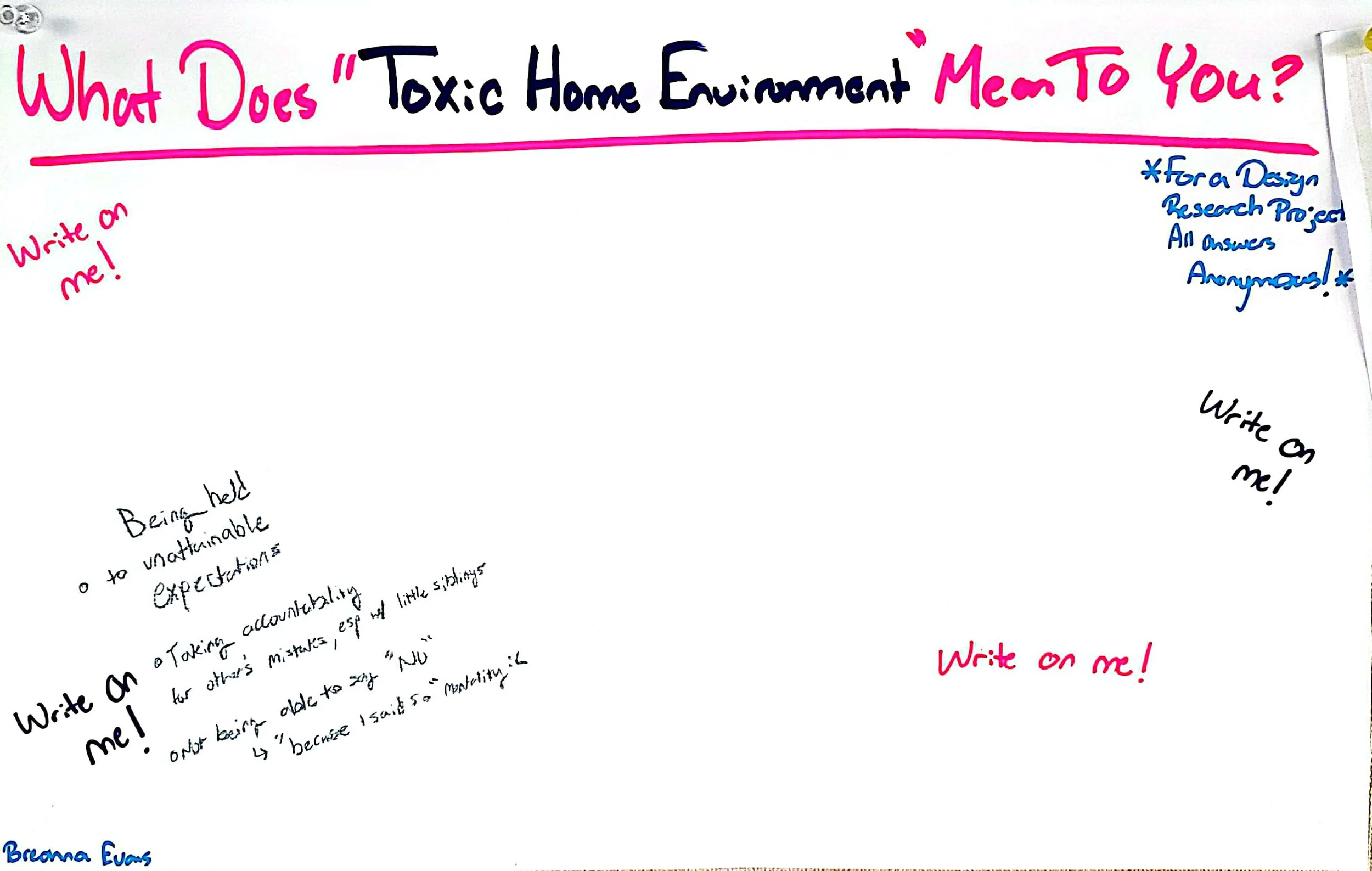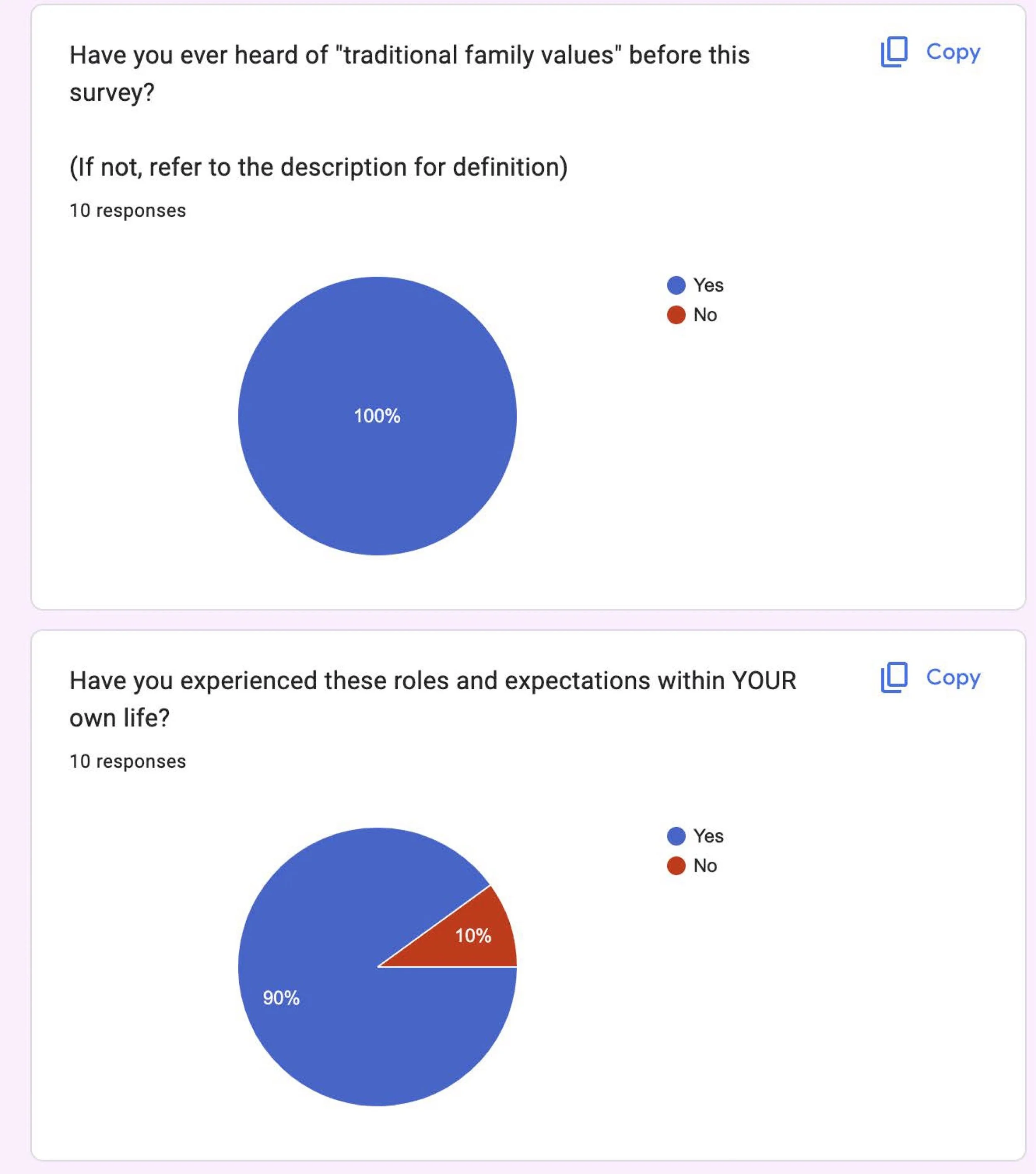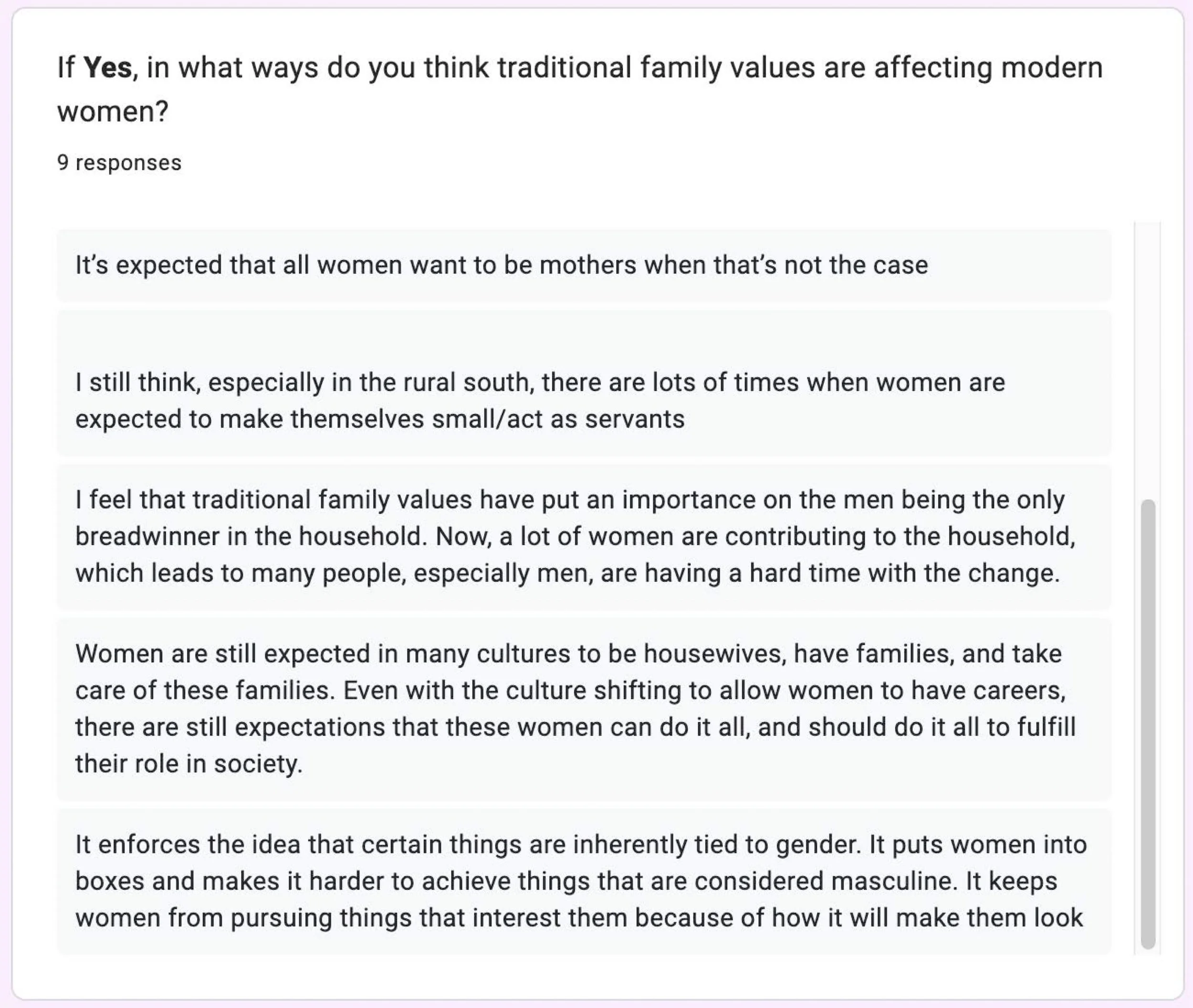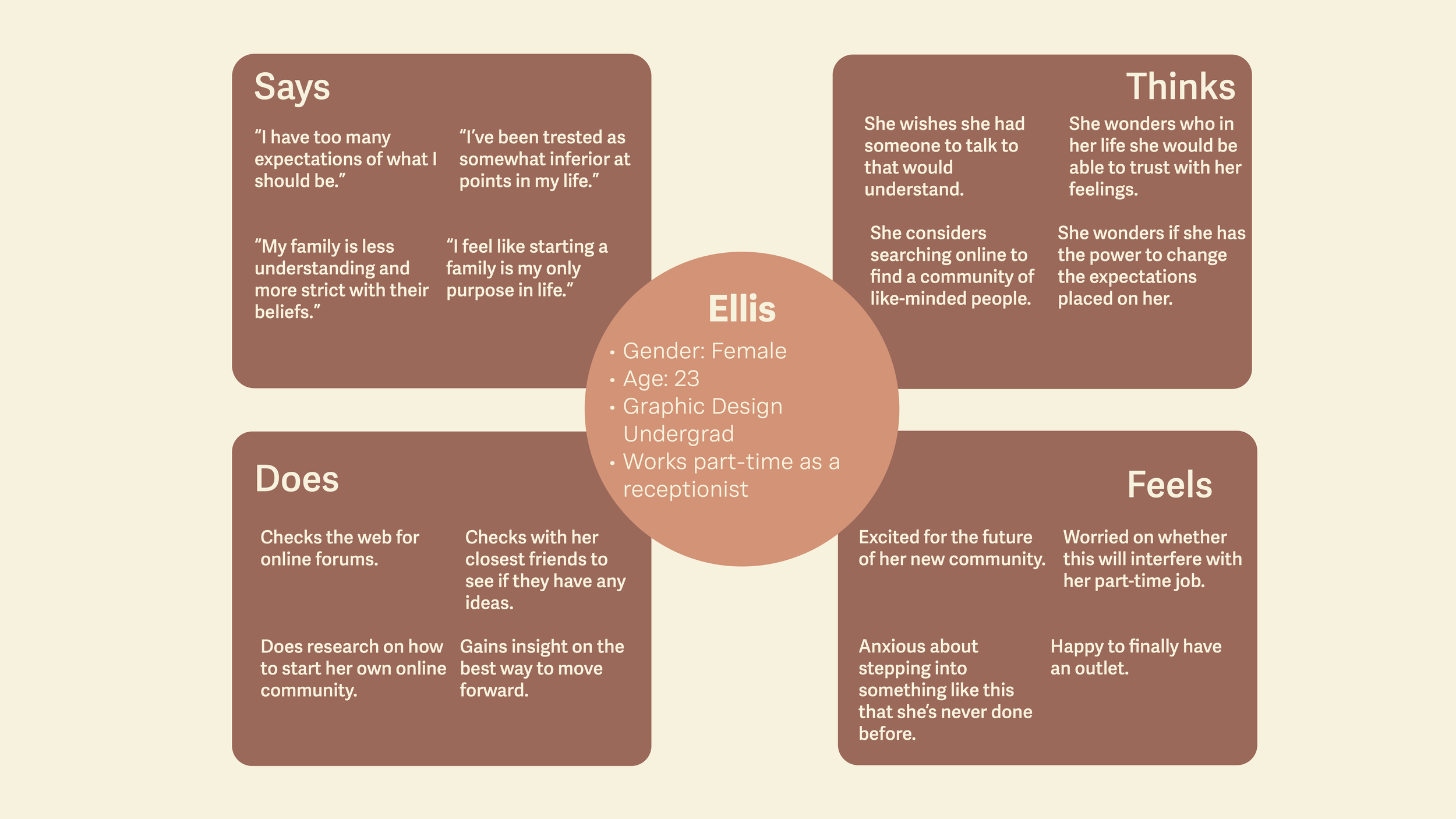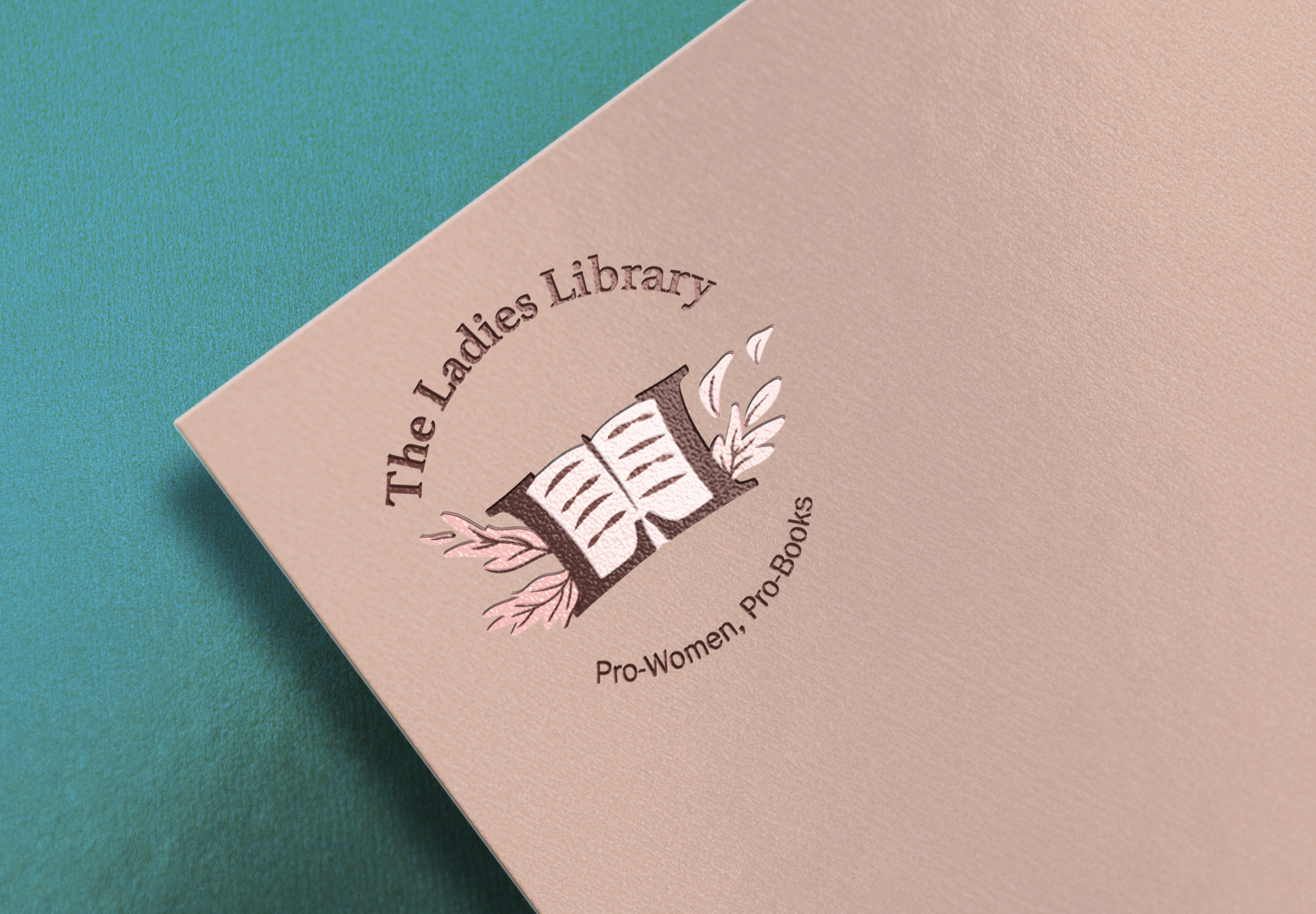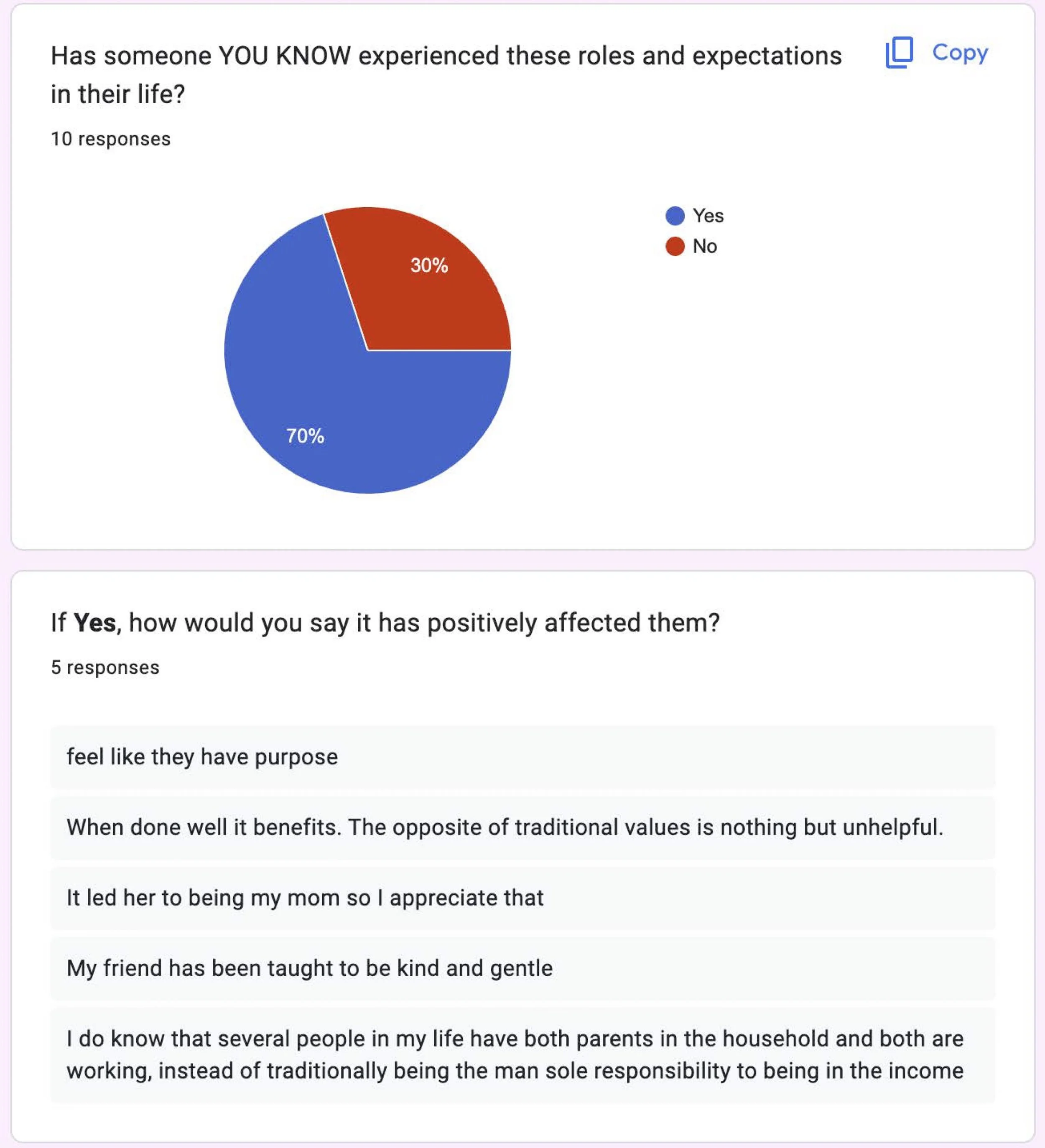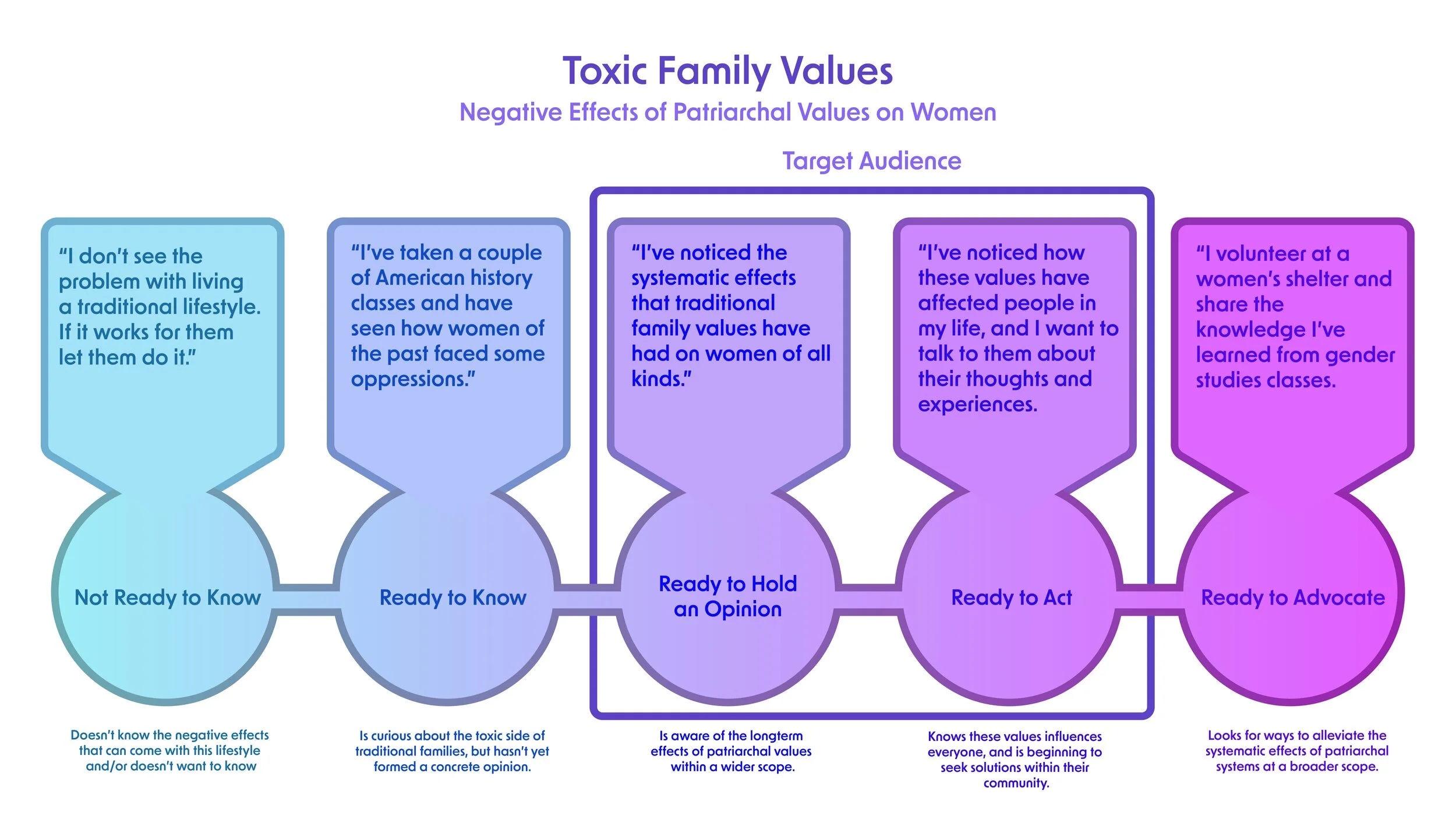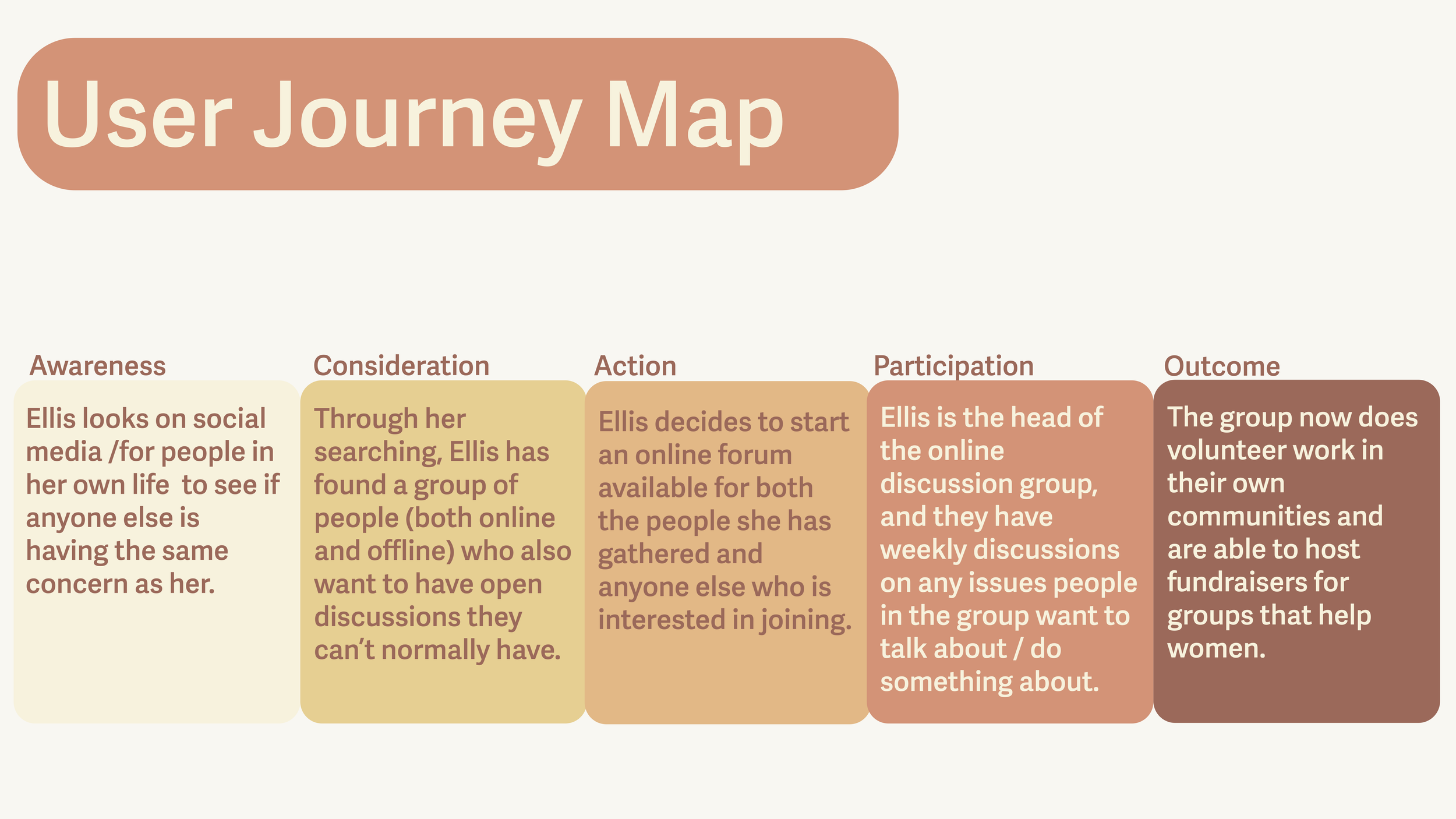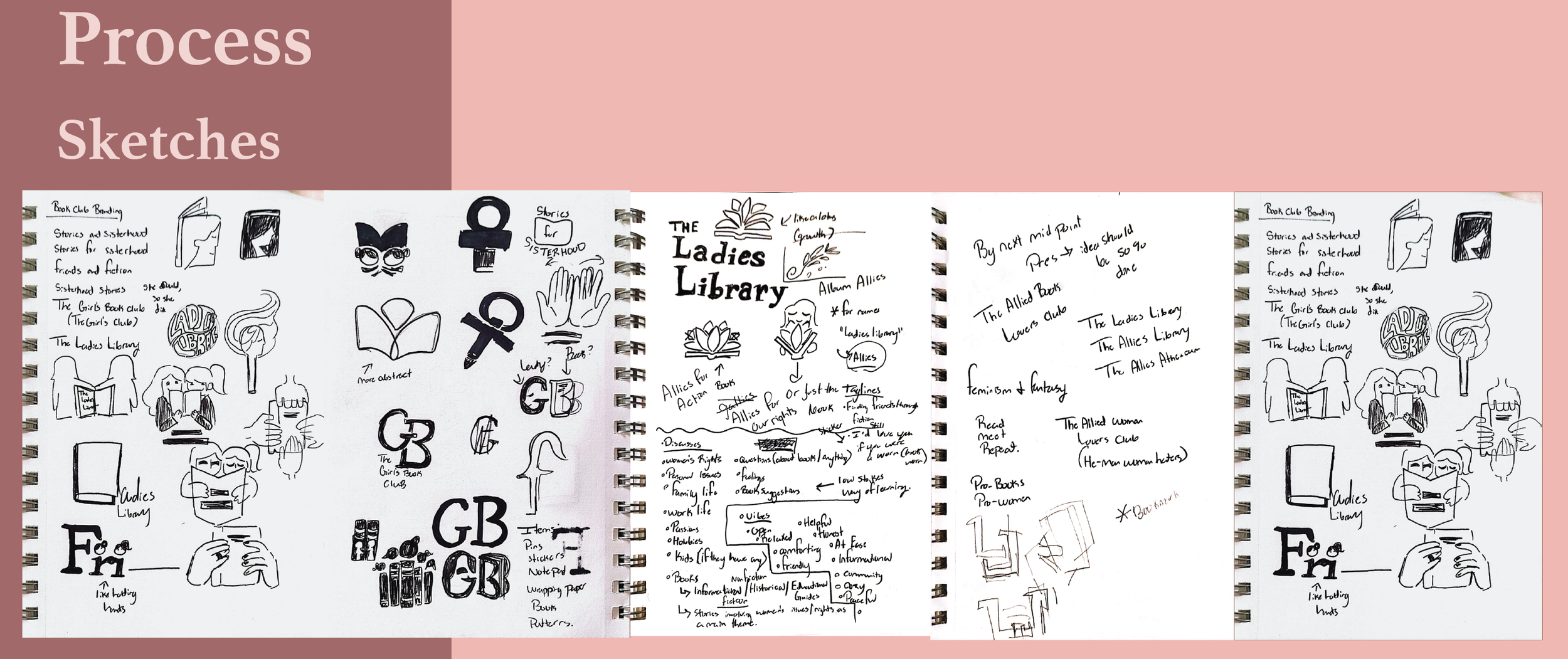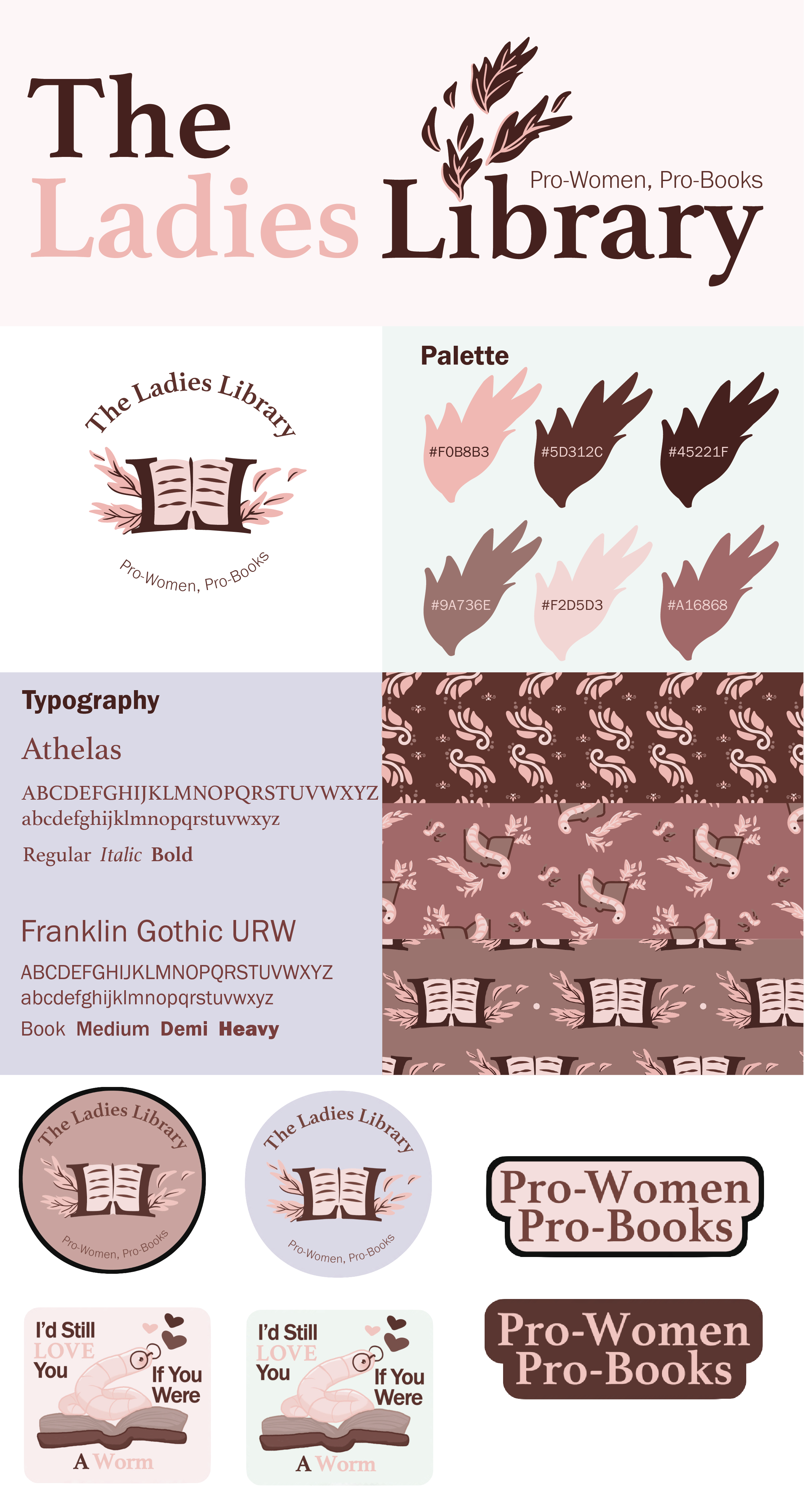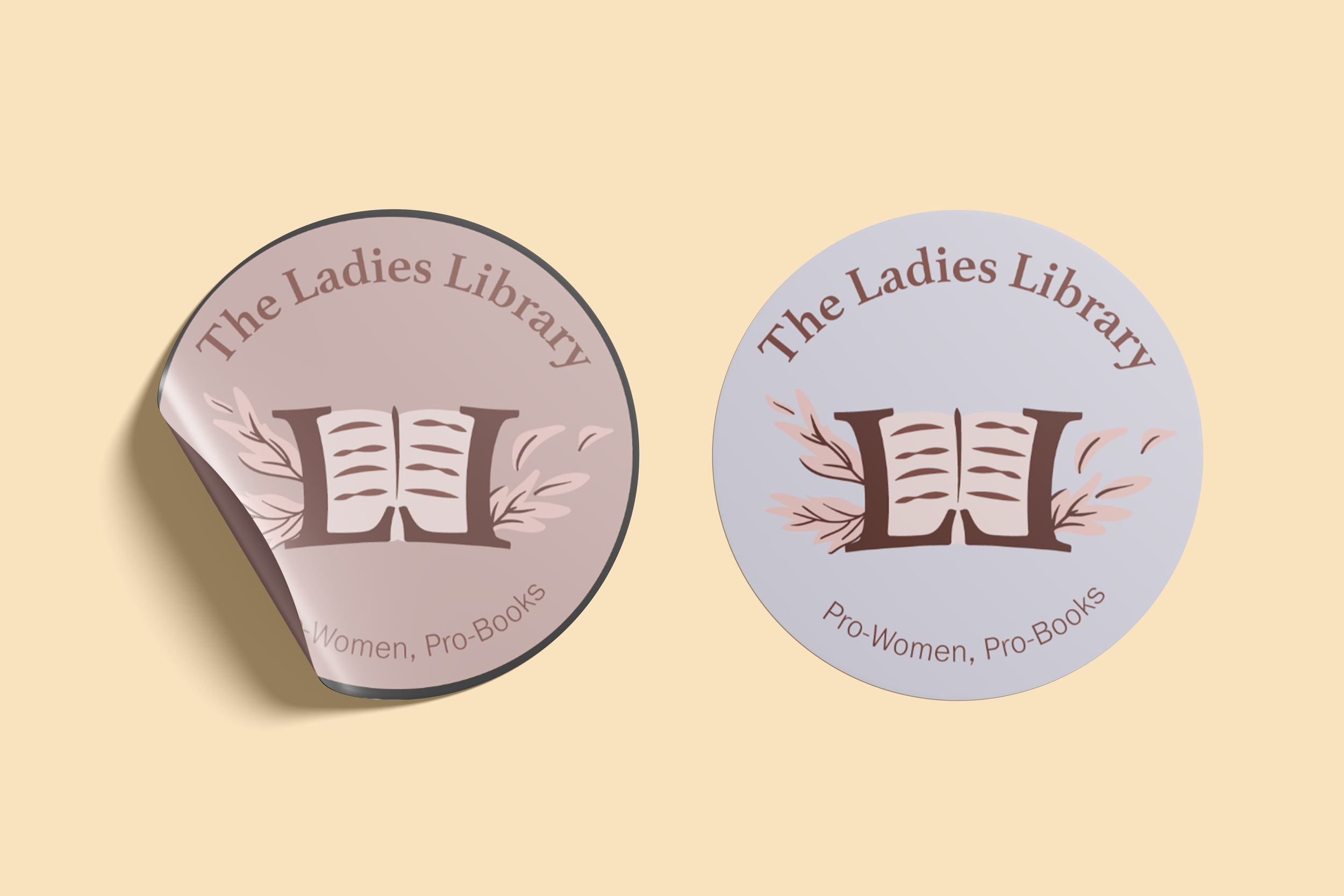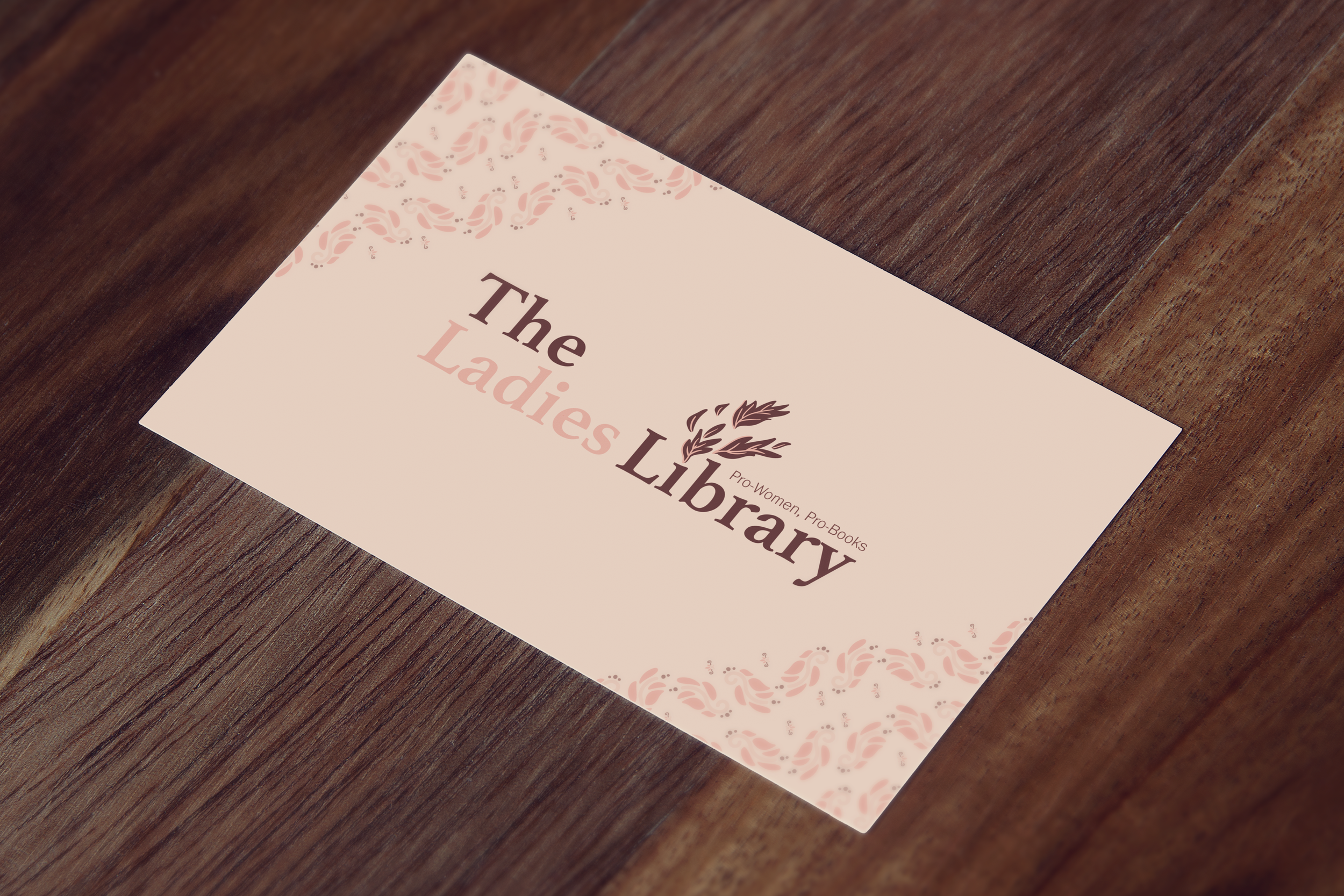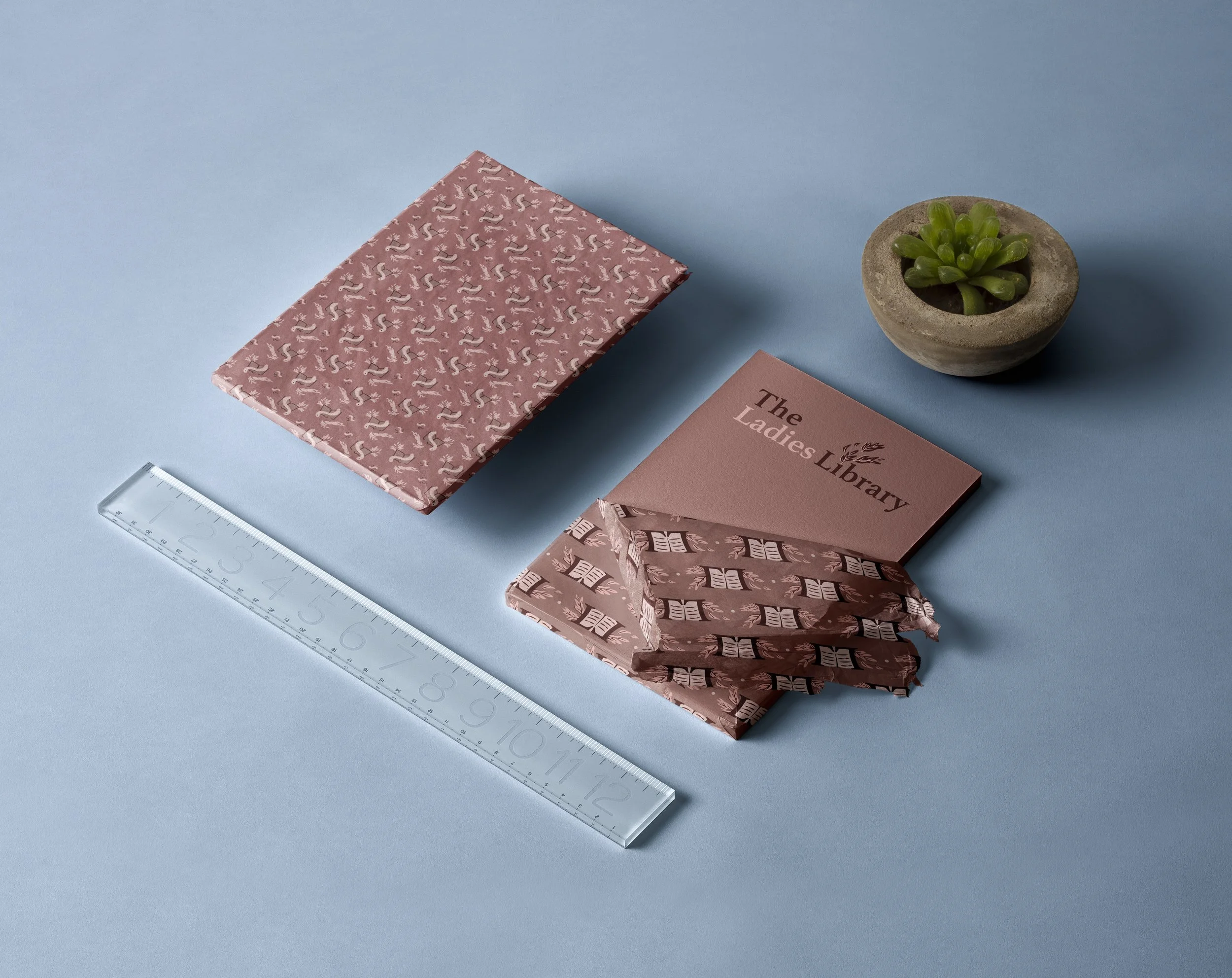
Project Brief
This was a large, semester spanning project that involved us picking a radical issue - an extreme and systematic problem that would require a fundamental systematic change - we felt was important to us, ideating and researching ways we could help alleviate this issue, and designing an “intervention” method to carry out our solution.
Research
Information Gathering
In continuing our research, we had to settle on two separate research methods and carry them out. I decided to go with a graffiti wall and a survey.
Method in Practice
The next step was to hone in on how we planned to mediate the issue we went with. This Audience Receptivity Gradient helped me pinpoint what my target audience should be for my intervention method: those ready to hold an opinion on toxic family values, and those ready to act on their opinion.
Finally, using our previously created persona we created a User Journey Map, which helped me get an idea of what kind of outcome I’m looking for from my method, as well as ways to achieve said outcome.
Intervention Method
The design intervention I decided to go with is a bookclub for women. The core theme of this bookclub would be to provide women with a place to discuss gender issues and the struggles they face.
I decided to go with this intervention because bookclubs can be very welcoming and open spaces to have a variety of discussions. There are often times when meetings aren’t just about books read, but also about the lives of those attending. Having a space where open discussion is allowed would let these women bond over shared experiences, as well as provide a way to offer advice to one another.
Another reason I went with a bookclub is because it is a great way to learn new things. If the club has books with feminist themes (fiction or non-fiction), it can serve as a way to expand their own knowledge on the subject.
Branding
We started by doing extensive research on our chosen topic. I decided I wanted to make mine on Toxic Traditional Family Values. Within this project, I was looking at this from the American perspective, and defined a traditional family as “a middle-class nuclear family that is patriarchal and childbearing focused”.
Our first main task was creating a large-scale system map to really get into the details of our chosen issue. I divided up my main issue into four broader categories: Historical Context, Values, Roles, and Today’s World.
After that, we moved on to coming up with a persona to help better understand our audience and get a better idea of what kind of needs need to be met by our intervention method.



